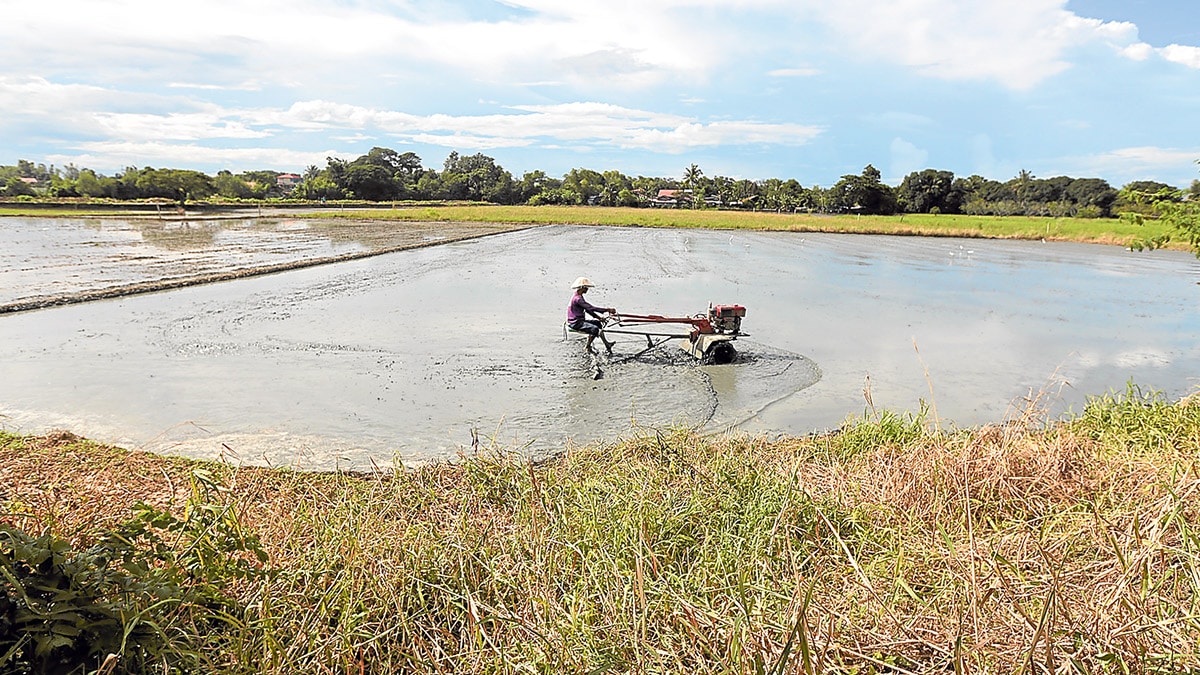
PLANTING SEASON A farmer uses a hand tractor to prepare a rice paddy for planting palay in Pulilan, Bulacan, on Aug. 8. —GRIG C. MONTEGRANDE
The Philippines is seen to import less rice from September onwards, mirroring a trend among the world’s rice-consuming countries to await India’s lifting of a yearlong rice export ban.
“I expect things to slow down from September,” said Subramanian Venkatram, cofounder of SSResource Media Pte. Ltd., which provides reports on the global rice market.
He particularly said the “-ber” months would likely be slower in terms of shipment of imported rice to the country.
READ: Only 4% of Filipinos think Marcos able to lower rice prices – Pulse Asia
The Philippine Rice Industry Stakeholders Movement (Prism) expects the same scenario to play out as some suppliers in Vietnam—the country’s leading source of imported rice—rescind their contracts to renegotiate their deals with buyers and fetch a higher price.
“Prices in Vietnam have increased. Many Vietnamese suppliers canceled the contract. The price difference is around $60 to $70 per ton. That’s the main factor. Once they canceled it, no more stocks [are] coming in,” Prism cofounder Orlando Manuntag said.
Manutag said it is high time for the Philippine government to initiate talks with rice-exporting states to ensure that contracts would not be nullified and rice imports would be delivered on time.
“It’s also time to provide support for local production to help the farmers,” he added.
Venkatram said the slowdown in rice imports was likewise occurring in other countries worldwide.
“We also see the world markets slowing down mainly because there’s a lot of expectation that India is going to reopen. Everyone is playing it cautious,” he said on the sidelines of SS Rice News Network 2024 held in Taguig.
READ: El Niño-La Niña duo setting up PH for weak palay yield
India, one of the main exporters of rice worldwide, banned in July 2023 the export of rice, including broken rice and non-basmati white rice, due to food security concerns. This disrupted the global markets, jacking up global rice prices as major importers like the Philippines scrambled to find alternative suppliers.
Through a bilateral arrangement, the Philippines was able to purchase about 20,000 metric tons (MT) of rice from India. The country has imported 2.57 million MT of rice so far this year through Aug. 8, based on the Bureau of Plant Industry’s tally. Most of the stocks were sourced from Vietnam, which delivered 1.95 million MT. Thailand followed suit with 360,444.74 MT.
Rice imports so far this year approximated 71.1 percent of the volume of rice sourced abroad in 2023.
The US Department of Agriculture had lowered its forecast on the country’s overseas rice purchases by 100,000 metric tons to 4.6 million MT this year because of “slowing purchases” from Vietnam.
Signed by President Ferdinand Marcos Jr. in June, Executive Order No. 62 slashes duties on rice to 15 percent until 2028. The reduction in tariff aims to augment supply, manage prices and temper inflationary pressure of commodities. INQ